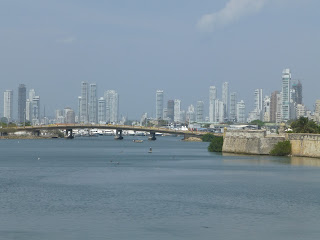Founded by Pedro de Heredia in the name of the spanish King in 1533, Cartagena rapidly became a strategic stop for the spanish vessels on their route between Spain and the colonies. Combined with its slave market, one of the biggest in southamerica, Cartagena became a rich and prosperous city, So much that it turned into an attractive plunder site pirates and corsairs could not resist.
All this past has left visible signs everywhere in Cartagena, from the wall and fortifications, to its people, to its houses and neighborhoods. The city is very photogenic and lives now from tourism.
Here some photos of Cartagena as a fortified city. The wall and other fortifications were build after Sir Francis Drake of England, a pirate as far as the spanish concerns, occupied and badly damage the city in 1586. In order to retire he negotiated a very costly reward.
Here other historical buildings inside and outside the city walls
The cultural and ethnical Caribbean, European and African mix is present everywhere. Due to its privileged geography, fresh fruit is good, inexpensive and available everywhere in Colombia. A glass of fruit salat (mango, papaya, pineapple, watermelon and others) cost about 0,30 EUR.
Any place is a good for a good barber. All he needs is a extension cable and a narrow strip shadow on the sideway.
Houses have being constantly restored since the UNESCO designated Cartagena as a World Heritage Site in 1984. It doesn't matter in which direction you look, you always see an eye-catching building.
Art and sculptures are also everywhere specially in the city's center.
Ant there is of course the see and the modern city,
It is without a doubt one more highlight in this trip.



















































Oye Pepe, nos hace recordar a las casas del distrito del Rímac, Y de Barrios Altos. En Lima.
ReplyDeleteMucha limpieza y alegría en los colores de las fachadas, de las vendedoras con trajes típicos de Colombia y de las frutas, que
tan apetitosamente se venden en las calles.